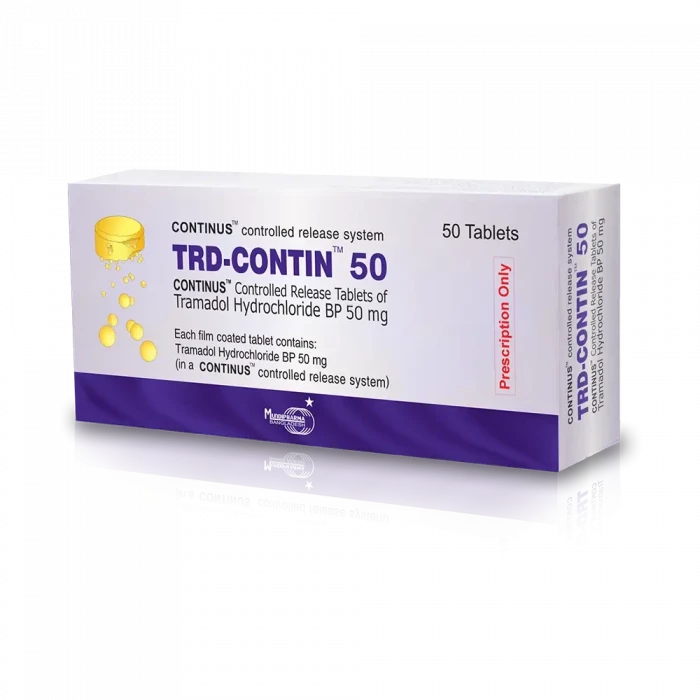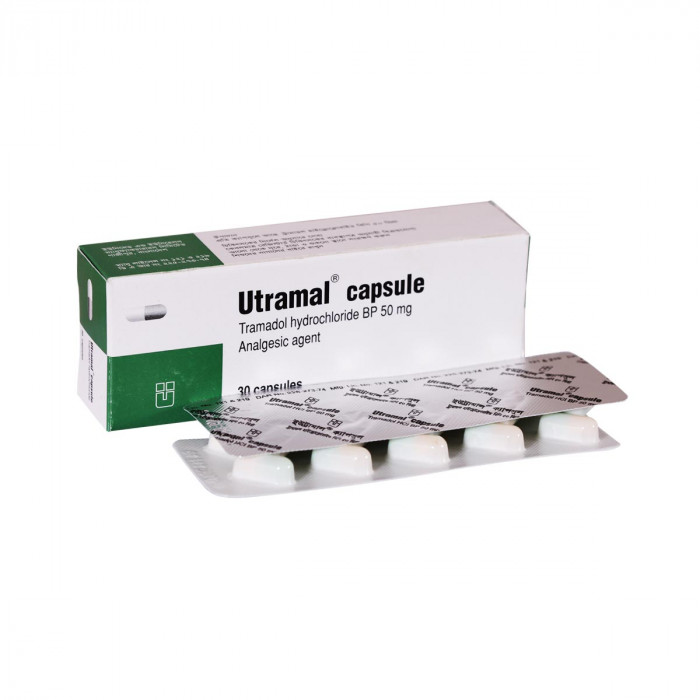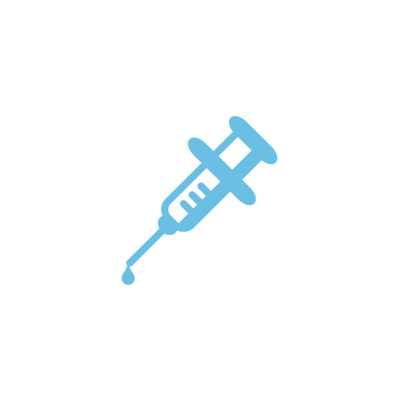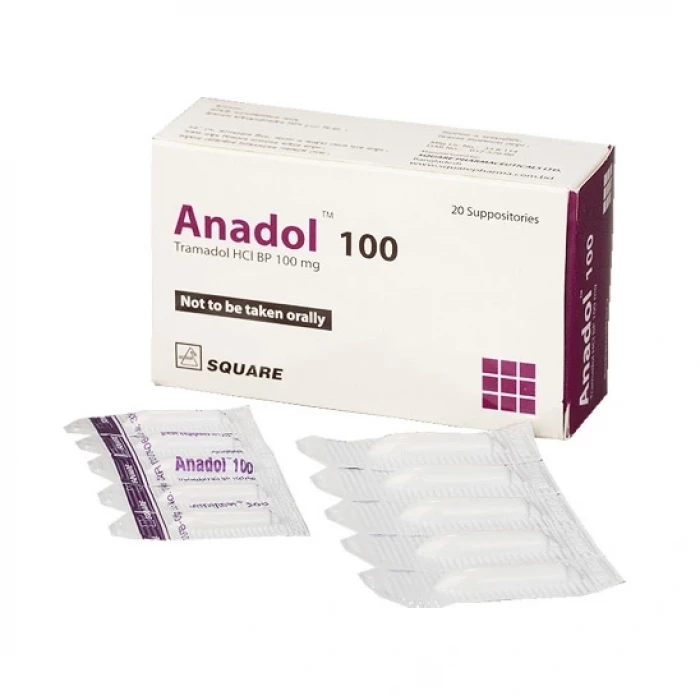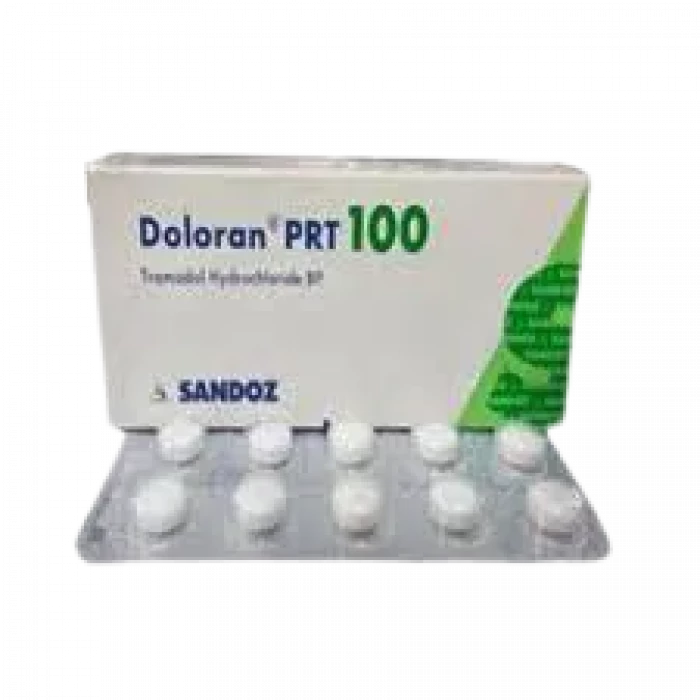

✔ 100% Authentic Product

Doloran PRT 100mg 10Pcs
Tablet Manufacturer/Distributor: Novartis (Bangladesh) Ltd. Generic Name: Tramadol Hydrochloride 100 mg Tablet

100% Genuine Products, Guaranteed
Safe & Secure Payments, Always
Fast, Secure & Efficient Delivery
Proper Packaging
Cashback offer (Optional):
🔹 Foreign manufacturer products are not applicable for Cashback offer
 Cash on Delivery - All over Bangladesh
Cash on Delivery - All over Bangladesh Urgent Delivery - 2 Hours Dhaka City
Urgent Delivery - 2 Hours Dhaka City ফ্রি ডেলিভারি! - ১৪৯৯ টাকা+ অর্ডারে ঢাকা
শহরে ।
ফ্রি ডেলিভারি! - ১৪৯৯ টাকা+ অর্ডারে ঢাকা
শহরে । ফ্রি ডেলিভারি! - ২৯৯৯ টাকা+ অর্ডারে ঢাকার
বাহিরে ।
ফ্রি ডেলিভারি! - ২৯৯৯ টাকা+ অর্ডারে ঢাকার
বাহিরে ।
✅ Description:
Indications
Tramadol is a pain reliever that is used to treat moderate to severe pain.
Postoperative discomfort is one of them.
Irritable bowel syndrome (IBS) with spastic discomfort
Cancer-related discomfort
Joint discomfort
Pain in the neck and back
Osteoporosis pain is a common symptom.
Pharmacology
Tramadol is a synthetic analgesic with a central action. It prevents neurotransmitters like serotonin and noradrenaline from being reabsorbed. As a result, it alters the transmission of pain impulses by activating both descending serotonergic and noradrenergic analgesia pathways. Tramadol's analgesic effects are mediated through mu-opioid receptor stimulation and indirect regulation of central monoaminergic inhibitory pathways.
Dosage & Administration
Capsule or Tablet: Usual doses are 50 to 100 mg every four to six hours. For acute pain an initial dose of 100 mg is required. For chronic painful conditions an initial dose of 50 mg is recommended. Subsequent doses should be 50 to 100 mg administered 4-6 hourly. The dose level and frequency of dosing will depend on the severity of the pain.The total daily dosage by mouth should not exceed 400 mg.
Sustained Release Capsule or Tablet: One SR capsule or tablet every 12 hours, for example first one in the morning and then at the same time in the evening. The number of capsules taken at a time will depend upon severity of pain, but it should not be taken more frequently than every 12 hours.The total daily dosage by mouth should not exceed 400 mg.
Injection: A dose of 50-100 mg may be given every 4 to 6 hours by intramuscular or by intravenous infusion. For the treatment of postoperative pain,the initial dose is 100 mg followed by 50 mg every 10 to 20 minutes if necessary to a maximum of 250 mg in the first hour. Thereafter, doses are 50 to 100 mg every 4 to 6 hours up to a total daily dose of 600 mg.
Suppository: Tramadol suppository should be administered rectally. For adults usual dose is 100 mg Tramadol Hydrochloride 6 hourly. In general, 400 mg Tramadol Hydrochloride (4 Tramadol suppository) per day sufficient. However, for the treatment of Cancer pain and severe pain after operations much higher daily doses can be used.
Interaction
In general, there are no medicines that interact with Tramadol that doctors should be concerned about. Monoamine oxidase (MAO) inhibitors are the only pharmacological class that should not be used in conjunction with Tramadol. The combination of carbamazepine and Tramadol induces a considerable increase in Tramadol metabolism, necessitating an increase in Tramadol dosage.
Contraindications
People who are hypersensitive to tramadol should avoid using it. Intoxication with alcohol, hypnotics, centrally acting analgesics, opioids, or psychotropic medications is also contraindicated.
Side Effects
Dizziness/vertigo, nausea, constipation, headache, somnolence, vomiting, pruritus, CNS stimulation, asthenia, sweating, dyspepsia, dry mouth, and diarrhoea are all common adverse effects. Malaise, allergic reaction, weight loss, vasodilatation, palpitations, abdominal pain, anorexia, flatulence, GI bleeding, hepatitis, stomatitis, and other less common side effects include malaise, allergic reaction, weight loss, vasodilatation, palpitations, abdominal pain, anorexia, flatulence, GI bleeding, hepatitis, stomatitis, and others.
Pregnancy & Lactation
Tramadol has not been proven to be safe during pregnancy. It has been proven that tramadol crosses the placenta. In pregnant women, there are no sufficient and well-controlled trials. Tramadol should therefore only be used during pregnancy if the possible benefit outweighs the risk to the fetus. Because tramadol and its metabolites have been found in breast milk, Tramadol Hydrochloride should not be given to a nursing mother.
Precautions & Warnings
Respiratory depression: When large doses of tramadol are used together with narcotic drugs or alcohol, it can cause respiratory depression. Therefore, patients at risk of respiratory depression should use tramadol with caution.
Opioid dependence: Tramadol is not recommended for patients who are dependent on opioids.
Concomitant central nervous system depressants: Tramadol should be used with caution and dose reduced when administered to patients receiving central nervous system depressants (such as alcohol, opioids, anesthetics, phenothiazines, sedatives, or sedative-hypnotics).
Concomitant MAO inhibitors: Patients taking MAO inhibitors should use tramadol with caution, as tramadol inhibits norepinephrine and serotonin uptake.
Tramadol should be used with caution in patients with elevated intracranial pressure or head trauma and patients with acute abdomen.
Therapeutic Class
Opioid analgesics
Storage Conditions
Keep below 30°C temperature, away from light & moisture. Keep out of the reach of children.
Disclaimer:
ePharma sole intention is to ensure that its consumers get proper
information as musch as possible. Although we do not guarantee the
accuracy and the completeness of the information that provided and
here information is for informational purposes only.
The information contained herein should NOT be used as a substitute
for the advice of a qualified physician. This may not cover
everything about particular health conditions,
lab tests, medicines, all possible side effects, drug interactions,
warnings, alerts, etc. Please consult your healthcare professional
and discuss all your queries related to any disease or medicine. We
intend to support, not replace, the doctor-patient relationship.



